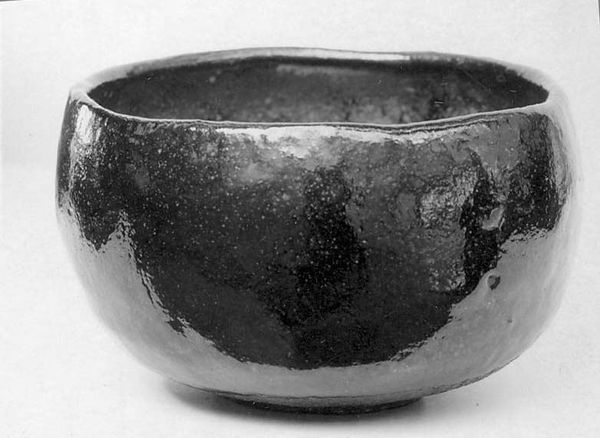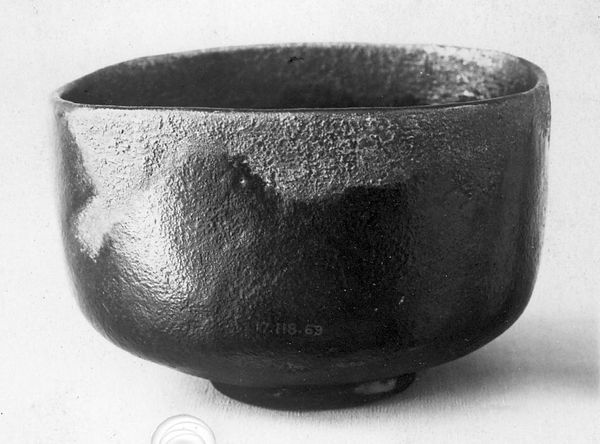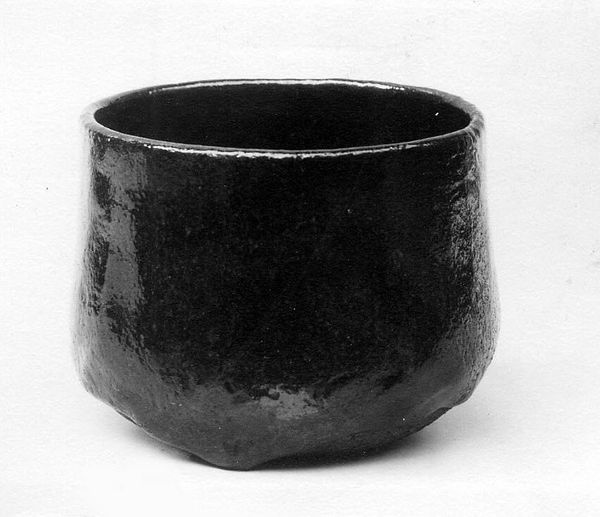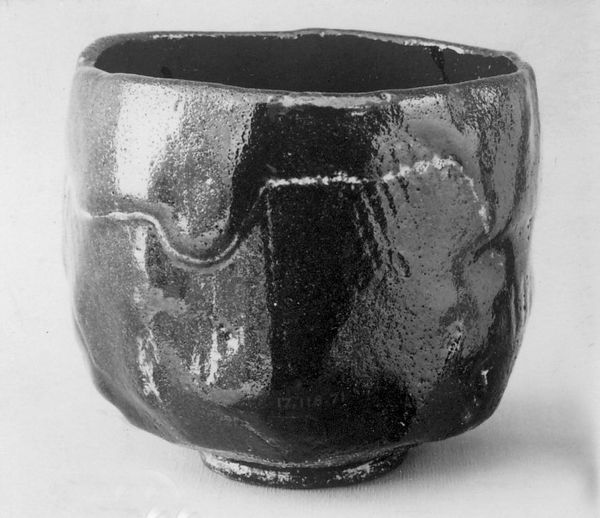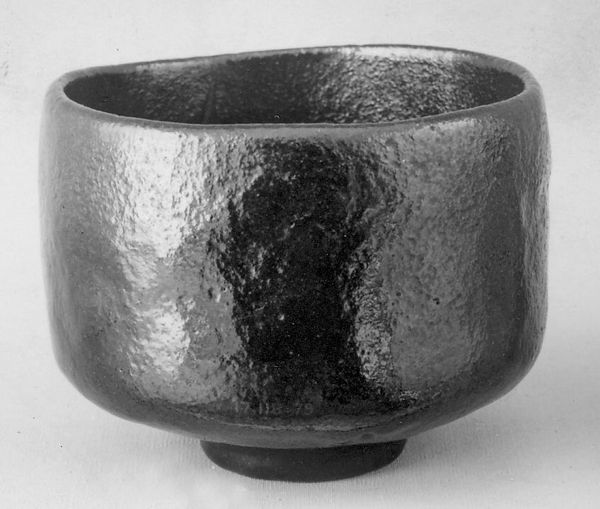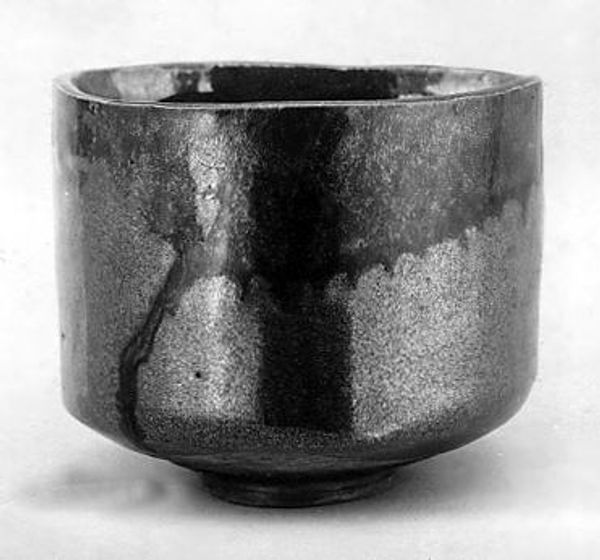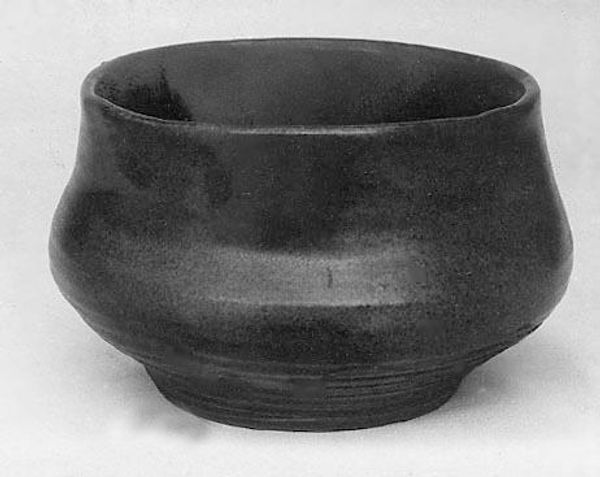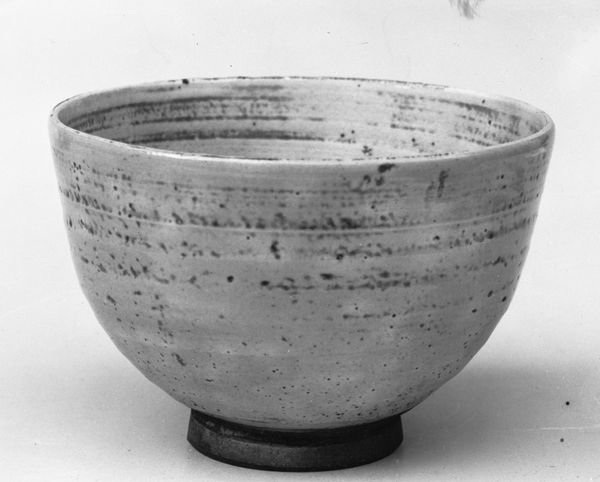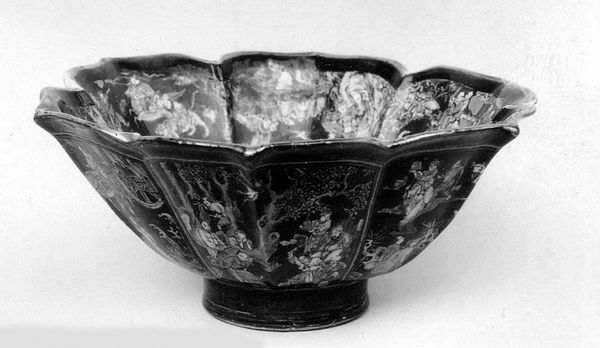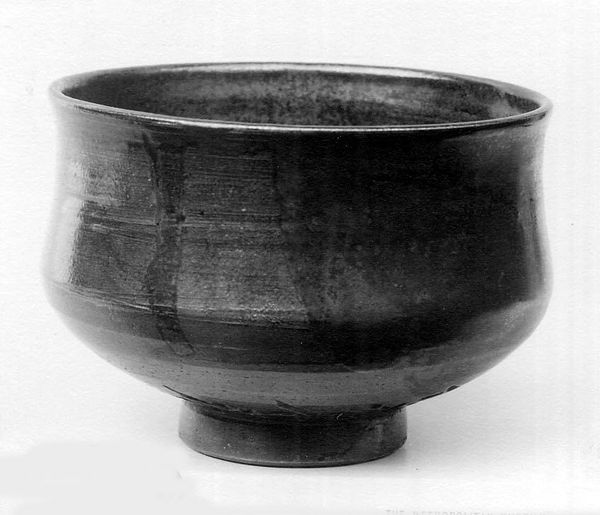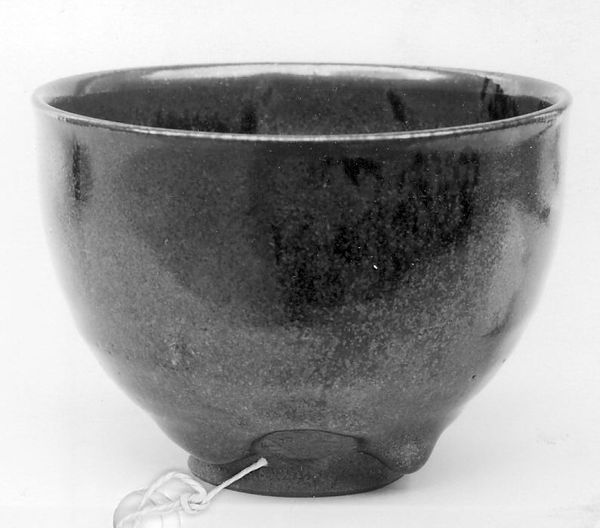
ceramic, sculpture
#
sculpture
#
asian-art
#
ceramic
#
sculpture
Dimensions: H. 3 in. (7.6 cm); Diam. 4 1/2 in. (11.4 cm)
Copyright: Public Domain
This is a teabowl made around the 17th century by the Widow of Ameya. Note how the simple, stout form speaks volumes through its materiality and texture. The dark, glossy glaze is uneven, pooling and crackling across the surface. These imperfections are not flaws, but integral to the bowl's aesthetic. The rough texture invites touch, creating a tactile experience. The bowl's modest dimensions encourage a sense of intimacy, and the crack lines across the side tell a story of use, repair, and the passage of time. In Japanese aesthetics, this embraces wabi-sabi, finding beauty in imperfection and impermanence. It challenges the Western ideals of flawless beauty, reflecting the Zen philosophy that values simplicity, humility, and the acceptance of transience. It is a piece that finds value in the lived experience, and the quiet contemplation it fosters.
Comments
No comments
Be the first to comment and join the conversation on the ultimate creative platform.

